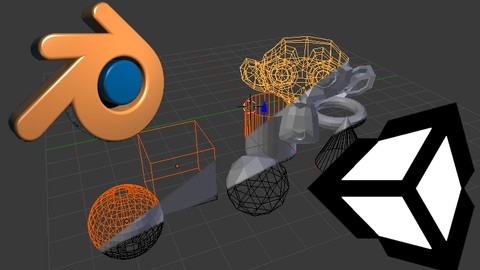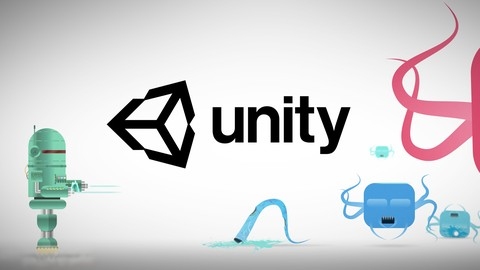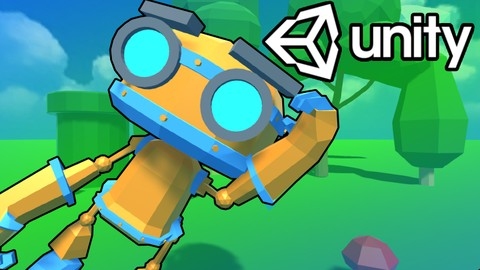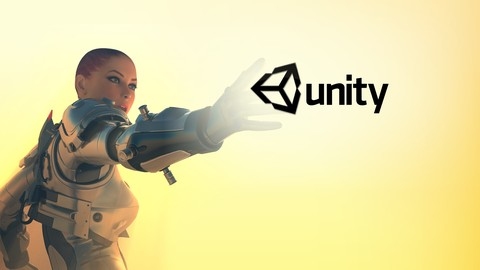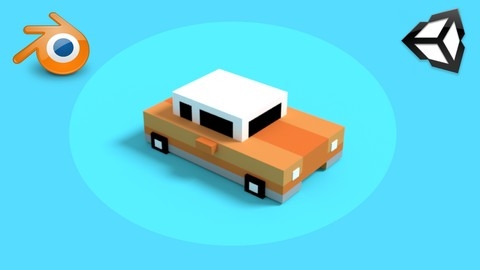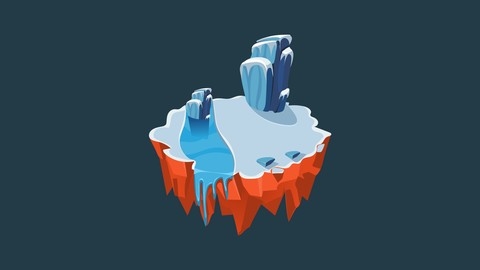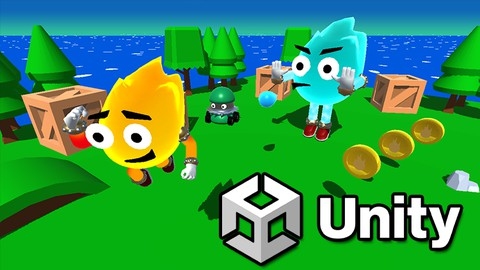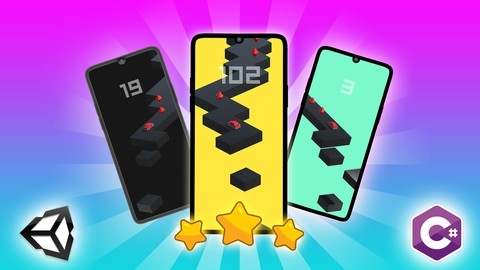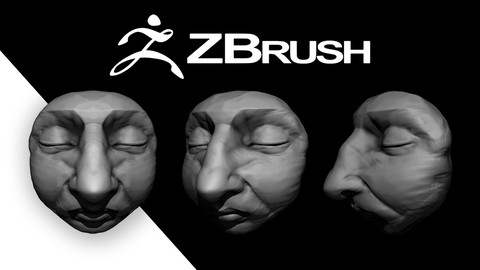3D game development is a thrilling and complex field that blends art, technology, and storytelling.
Mastering the skills needed to create immersive 3D worlds and engaging gameplay can lead to exciting careers in the gaming industry.
To build those worlds, you’ll need to learn how to model 3D assets, and Blender is a powerful open-source software that’s popular among game developers for its versatility and user-friendliness.
Finding the right course for your 3D game development goals can be a daunting task.
With so many options available on platforms like Udemy, it’s easy to feel overwhelmed.
You’re looking for a course that’s not only comprehensive but also practical, guiding you through the process of creating assets.
We’ve done the research for you and recommend Learn Blender 3D Modeling for Unity Video Game Development as the best overall course on Udemy for 3D game development.
This course dives deep into the fundamentals of 3D modeling in Blender while focusing on preparing assets for seamless integration into Unity.
The instructor, Billy, provides clear instructions and real-world examples, ensuring you understand the key concepts needed to create professional-quality 3D models for your games.
However, this is just one of many great 3D game dev courses on Udemy.
If you’re looking for something more specialized, like animation, UV mapping, or specific asset types, we have a full list of recommendations for you to explore.
Keep reading to find the perfect course to launch your 3D game development journey.
Learn Blender 3D Modeling for Unity Video Game Development
This course covers the fundamentals of using Blender for 3D modeling and preparing assets for Unity game development.
You will learn essential skills like navigating the Blender interface, manipulating objects, working in edit mode, applying modifiers, UV mapping, and basic animation.
The course starts by ensuring you have the right setup with a keyboard numpad and 3-button mouse.
It then dives into core controls like selecting, moving, rotating, scaling objects, and using tools like extrude, loop cut, bevel, and knife.
You’ll learn handy tricks like axis locking, increment snapping, and working with the 3D cursor.
In the edit mode sections, you’ll master techniques for selecting geometry components like vertices, edges, and faces using options like loop select and link select.
You’ll then utilize edit mode tools like extrude, inset, bevel, loop cut, knife and spin to model new shapes.
The modifiers chapter covers powerful utilities like mirror, subdivision, decimate, booleans and arrays that allow quickly modeling complex shapes.
You’ll also learn about add-ons like extra objects and cell fracture.
For creating game assets, there are dedicated sections on modeling common props like gravestones, crates, barrels, pottery, treasure chests, fences, bridges, houses, tables, chairs and pipes.
The UV mapping lectures teach unwrapping objects and texture atlasing.
Finally, you’ll animate the treasure chest model both in Blender and Unity, including scripting in C#.
Throughout the course, you’ll take quizzes to reinforce the concepts.
Unity Game Development: Make Professional 3D Games
You’ll start by learning the fundamentals of coding in C#, mastering concepts like variables, functions, loops, and object-oriented programming.
From there, you’ll dive into your first Unity project - a simple 3D game called “Pumpkins and Golems” to get a feel for the engine.
The real fun begins with the “Awesome Runner” infinite runner game, where you’ll import assets, generate levels, implement player movement and abilities, add enemies and collectibles, and even integrate a scoring system and UI.
But that’s not all - you’ll also explore advanced topics like animations, camera work, lighting effects, and cutscenes.
The course includes several additional game projects like “Puzzle Ball”, “Awesome Ninja” (with zombie and boss fights), and “Zig Zag” to reinforce your learning.
Throughout the course, you’ll gain hands-on experience with Unity’s interface, build settings, models, shaders, particle systems, physics materials, and more.
You’ll learn to create menus, detect button touches, implement singletons, and even add music and sound effects to your games.
The course covers a wide range of techniques, from level generation and enemy AI to skill effects and damage systems.
You’ll work with Unity’s animation tools, creating transitions and multiple conditions for character movements.
Additionally, you’ll explore different types of lighting, including directional, point, and spot lights, as well as shadow effects and light baking.
With quizzes strategically placed throughout the curriculum, you’ll have the opportunity to reinforce your understanding and track your progress.
The course also keeps you up-to-date with the latest Unity features, tips, and tricks.
Learn to make a 3D Platformer Game with Unity
This course will guide you through creating a complete 3D platformer game using Unity.
You’ll start by setting up Unity and your first scene.
Then, you’ll create the player character, adding movement, jumping, and gravity.
Next, you’ll set up camera controls using Cinemachine to follow the player smoothly.
You’ll improve the player further by adding animations, controller support, and other refinements.
The course covers essential game systems like respawning, checkpoints, health management, and user interfaces to display health and coins collected.
You’ll learn to add audio, including music tracks and sound effects.
You’ll build a pause menu with options to control volume and set the skybox.
Then, you’ll create enemies with AI behaviors like patrolling, chasing, and attacking the player.
Enemies will animate and drop coins when defeated.
The course walks you through designing levels using prefabs and adding elements like a level exit, loading other levels, and a main menu to save progress.
You’ll build a level select scene with unlockable islands representing levels.
More advanced mechanics are covered, like opening doors, pressing buttons to remove obstacles, breaking boxes, and hazards like spinning saws.
You’ll create a boss battle with a massive enemy to defeat.
Finally, you’ll add post-processing effects and build the game for release.
The full project files are included for reference.
Create a 3D Endless Runner from Scratch in Unity
You will start by animating the player character, learning how to control its movements and blend animations seamlessly.
Next, you’ll dive into creating an infinite 3D platform world using prefabs.
The course will guide you through setting up platform models, handling corner turns, and implementing an object pooling system to efficiently manage platform spawning.
Once the environment is set up, you’ll integrate the player character into the scrolling world, ensuring smooth gameplay mechanics.
You’ll tackle challenges like preventing logic bugs and adding complexity with T-intersections.
The course then moves on to introducing obstacles that the player must dodge.
You’ll learn to create fire obstacles using particle systems and program them to spawn randomly on platforms.
Additionally, you’ll build explodable walls that the player can destroy using magic spells.
To enhance the user experience, you’ll delve into creating a graphical user interface (GUI) with a main menu, buttons, popup windows, and volume controls.
This section will cover GUI design principles and programming interactions.
As you progress, you’ll incorporate gameplay elements like coin pickups, scoring systems, and a life count display.
The course will teach you how to animate coins, detect collisions, and update scores and lives accordingly.
In the final stages, you’ll add visual and auditory effects to polish the game.
This includes implementing fog, magical explosions, background music, sound effects, and synchronized animations.
You’ll also learn how to save user settings and create animated pickups with particle effects.
Throughout the course, you’ll have access to the H3D student community for support and engagement.
The instructor, Penny, will provide guidance and advice, ensuring you have a solid foundation for continuing your game development journey.
Unity 3D Master Class - Game Development For Beginners
You’ll start by learning about the Unity interface, including the different panes, tabs, and views like the Scene, Hierarchy, Project, and Inspector windows.
You’ll then dive into manipulating objects within the Unity environment, covering techniques for selecting, moving, rotating, scaling, snapping, and parenting objects.
The course will guide you through importing various types of assets into Unity, such as 3D models, audio files, textures, scripts, and asset packages.
Setting up the game scene is a crucial step, and you’ll learn how to add components to game objects, create realistic terrain, set up scene borders, and implement a catch-all zone.
The course also covers essential physics concepts like rigid bodies, colliders, physics materials, cloth simulation, and ragdoll physics.
You’ll explore ways to combine assets effectively, including texture atlases, materials, 3D modeling programs, and prefabs.
Populating the scene with meshes and marking them as static is also covered.
Behavior scripting is a significant part of game development, and this course introduces you to different programming languages used in Unity, such as C# and JavaScript.
You’ll learn how to work with game objects, procedurally instantiate objects, and implement pickup and scoring systems.
Optimization techniques like camera culling, distance culling, and occlusion culling are covered to ensure your games run smoothly.
Animation is another critical aspect, and you’ll learn about procedural animation, Unity’s built-in animation system, and character animation using both procedural and Mecanim techniques.
Lighting is essential for creating immersive game environments, and the course covers ambient light, directional light (sun and moon), point lights, spot lights, emissive materials, and baking light maps.
User interfaces (UI) are crucial for player interaction, and you’ll learn about Unity’s built-in GUI system, third-party GUI solutions, and how to display directional information.
Finally, the course covers the final touches required for publishing your game, such as cross-platform settings, resolution and presentation options, game icons and splash images, and building standalone apps for Windows, Mac, and Linux.
Blender 3D Modeling & Animation : 20+ 3D Projects in Blender
This course is a comprehensive guide to learning 3D modeling and animation using Blender, with a focus on creating assets for game development in Unity.
You will start by getting familiar with the Blender interface and basic tools like navigating, moving, scaling, and rotating objects.
The course then dives into 3D modeling basics, teaching you how to create primitive shapes, edit vertices, edges, and faces, use selection techniques, work with edge loops and loop cuts, subdivide objects, perform proportional editing, and extrude objects.
You’ll also learn about smooth shading.
From there, you’ll apply these skills to create various low-poly 3D models like rocks, trees, barrels, mountains, and a game coin.
The course covers more advanced modeling techniques such as using modifiers (Boolean, subdivision surface, mirror), working with vertex groups, snapping, and modeling with text.
Several projects walk you through modeling more complex objects like a blocky car and a snowman.
You will then learn the fundamentals of animation in Blender, including keyframing, auto keyframing, animating along paths, shape keys, and mesh deform animations.
The course also covers UV mapping and texture painting, guiding you through creating a colorful Easter egg and a mushroom scene.
You’ll learn terrain sculpting and texture painting to build a 3D island environment, as well as how to create a skydome.
Notably, you will build a complete 3D game in Unity, covering everything from setting up the game level and controlling the ball to spawning platforms, creating diamonds, implementing particle effects, UI animations, scoring, and game management.
Finally, the course prepares you for Android game development, explaining touch inputs, accelerometer data, responsive UI, swipe controls, and joystick input.
3D Game Development with Blender
You’ll start by learning the basics of 3D modeling, including how to navigate the Blender interface, create and manipulate primitive objects, and add colors to your models.
Once you’ve got the fundamentals down, you’ll dive into building more complex models by manipulating vertices and edges.
You’ll learn how to create a variety of objects, such as cars, human figures, and four-legged creatures.
This hands-on approach will give you a solid foundation in modeling techniques.
The course then covers texturing and environment creation, teaching you how to use UV mapping to apply realistic textures to your models.
You’ll also learn how to create terrains, paint textures, and build immersive environments with skies and lighting.
Animation is a crucial aspect of game development, and this course dedicates a significant portion to teaching you how to animate your models using keyframes, shape keys, and armatures.
You’ll learn to create animations for vehicles, characters, and more.
But the real fun begins when you start working with Blender’s game engine.
You’ll learn how to incorporate user input from keyboards, gamepads, and mice to control your objects and characters.
The course covers everything from basic motion to complex controls like mouse-look for first-person shooters.
Physics is an essential part of modern games, and you’ll learn how to use Blender’s built-in physics engine to simulate realistic forces, collisions, and even create weapons and bullets.
You’ll also learn about the character physics model, which allows you to create characters that can navigate terrain and interact with objects.
As you progress, you’ll learn how to manage and display game data, such as creating heads-up displays (HUDs), switching between logic states, and even building an “escape the room” game to put your skills to the test.
One of the most exciting aspects of this course is the introduction to programming with Python.
You’ll learn how to integrate Python into your games, allowing you to create more complex behaviors and interactions that would be difficult or impossible with Blender’s logic bricks alone.
Towards the end of the course, you’ll learn how to create a game design document and put all your skills together to build a complete game called “Spatial Invaders.”
This practical experience will be invaluable as you continue your journey in game development.
Learn to Create a 3D Platformer Game with Unity & C#
This course takes you on a journey to create a fully-fledged 3D platformer game using Unity and C#.
You’ll start by setting up the project and test area, then dive into controlling the player character.
This includes implementing movement, gravity, jumping, and animating the player.
Next, you’ll work on the camera, making it follow the player while limiting its movement and improving shadows.
The course then covers respawning mechanics, including simple respawns, using coroutines for better respawns, resetting the player, fading effects, and implementing checkpoints.
You’ll build a player health system, allowing the player to take damage, track health, and gain temporary invincibility with visual effects.
UI elements like a health bar and level timer will also be implemented.
The course teaches you how to add collectibles like coins and crystals, saving the player’s progress.
You’ll then create enemies that patrol, chase the player, jump to attack, and damage the player while also taking damage themselves.
Menus are covered next, including a pause menu and main menu.
You’ll learn to create levels, complete with exit animations and transitions.
An overworld level select system will be built, allowing you to load levels, display UI, unlock levels with crystals, and continue your progress.
An exciting boss battle arena awaits, where you’ll set up the boss, activate it, damage it, and display its health.
The boss will move and fire shots, with increasing difficulty.
Completing the battle will lead to the game’s ending.
Finally, audio systems for music and sound effects will be implemented.
By the end, you’ll have a complete, polished 3D platformer game ready for deployment.
Unity Android : Build 3D ZigZag Racing Game with Unity & C#
The course starts by guiding you through installing Unity 2022 and setting up your first project.
Right away, you’ll dive into creating the core elements of the ZigZag Racer game.
You’ll learn how to build the platforms, set up the camera, add the car model, and configure its collider.
This hands-on approach ensures you understand the fundamentals of game development in Unity.
Once the basics are covered, the course walks you through implementing the game’s core mechanics.
You’ll create scripts to control the car’s movement, handle user input for changing directions, and manage the overall gameplay flow.
This includes ignoring the first tap and triggering movement after the initial touch.
A crucial aspect is generating the game level dynamically.
You’ll learn techniques for randomly spawning platforms, creating a smooth camera follow system, and handling game over scenarios.
The course even covers adding special effects like platform falling and changing the background color.
To enhance the user experience, you’ll integrate a scoring system, create a main menu UI, display the high score, and save player progress.
The course also guides you through adding audio elements, like background music and sound effects for collecting items.
Speaking of collectables, you’ll learn how to create diamond pickups, spawn them randomly, and increment the score when the player collects them.
Particle effects for pickups are also included, adding a polished touch to the game.
Once your game is complete, the course covers publishing it online with WebGL and building it for the Android platform.
You’ll even learn about free platforms to upload your Android game.
Additionally, the course covers implementing video ads and monetization strategies for your game, ensuring you can potentially generate revenue from your creation.
For absolute beginners, there’s an optional section that teaches C# scripting basics within Unity, covering variables, functions, loops, and more.
By the end, you’ll know game development fundamentals, how to implement core mechanics, add visual effects, integrate audio, and publish your game for Android devices.
Zbrush Character Modeling and Sculpting: Zbrush Course
This comprehensive online course takes you on a journey from the basics of Zbrush, an industry-standard 3D sculpting software, all the way to creating complex character models ready for game engines.
You’ll start by getting familiar with Zbrush’s interface and core tools like the powerful sculpting brushes.
The course walks you through essential techniques like working with dynamic subdivisions to add increasing levels of detail to your models.
You’ll learn how to use masking to sculpt specific areas precisely and maintain symmetry for character designs.
As you progress, you’ll dive into more advanced workflows like managing subtools to break down your character into separate meshes for easier sculpting of different body parts.
Techniques like ZRemesher and polygroups allow you to optimize and refine your high-resolution sculpts into clean, game-ready geometry.
One standout aspect is the focus on sculpting props and accessories like weapons or armor.
You’ll use Zbrush’s versatile modeling tools to create detailed hard surface elements that integrate seamlessly with your character sculpts.
The course also covers essential skills like customizing Zbrush’s UI for an efficient workflow tailored to your needs.
You’ll learn time-saving tricks like using Lazy Mouse for smooth, controlled strokes when sculpting fine details.
Towards the end, you’ll get hands-on practice sculpting complete characters from reference, adding layers of complexity from the initial block-out to tertiary details.
The instructor provides real-time demos showcasing their professional techniques.
While the core focus is on sculpting, you’ll also get an introduction to texturing your models using Zbrush’s powerful polypaint tools.
This prepares you for the next step of taking your high-res sculpts into a game engine for final texturing, rigging and animation.
